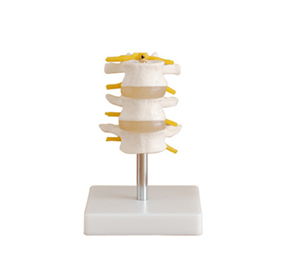19-11-2024
ADA MED SUPPLY LIMITED
Article tag: Lumbar spine model medical bone model
At the intersection of medical education and clinical practice, how to combine the esoteric anatomical theory closely with the practical clinical operation has always been a topic of constant exploration in the medical field. The lumbar spine model, as a bridge in this field, is gradually showing its unique value in assisting clinical operations.
Lumbar spine, as an important part of the human spine, has complex structure, diverse functions and extensive clinical problems. For medical students, rehabilitation therapists, and orthopedic surgeons, a thorough understanding of the structure and function of the lumbar spine is a prerequisite for effective clinical practice. However, it is often difficult to fully and intuitively understand the complexity and variability of the lumbar spine only with text descriptions and two-dimensional images in books.

At this point, the lumbar spine model becomes particularly important. Through the elaborate manufacturing process and highly simulated design, it is possible to accurately reproduce the anatomy of the lumbar spine, including key parts such as the vertebral body, vertebral arch, foramina, and spinous process. This three-dimensional presentation mode not only enables learners to intuitively observe the morphological characteristics of the lumbar spine, but also to deeply explore the structural details and functional roles of the lumbar spine through touch, comparison and other ways.
More importantly, it plays an irreplaceable role in clinical operation training. By simulating real clinical scenarios, learners can practice lumbar puncture, manual reduction, rehabilitation training and other operations on the model. This physical manipulation process not only helps to deepen learners' understanding of the treatment of lumbar diseases, but also improves their clinical manipulation skills and ability to respond to emergencies.
In summary, lumbar models play an important role in assisting clinical operations. It provides learners with a comprehensive, intuitive and actionable learning platform by combining esoteric anatomical theory with practical clinical practice. Through the study and practice of this platform, learners will not only gain a deep understanding of the structure and function of the lumbar spine, but also improve their clinical operation skills and coping abilities. Therefore, the lumbar spine model is undoubtedly an indispensable and important tool in medical education, rehabilitation therapy and orthopaedic clinical practice.